Latest Review

2018-2020 Subaru Liberty review
The Subaru Liberty is a conservative but classy looking medium sedan that’s renowned for its very smooth boxer engines, all-wheel drive, and reliability. Auto-braking is standard.
What stands out?
The Subaru Liberty is a conservative but classy looking medium sedan that’s renowned for its very smooth boxer engines, all-wheel drive, and enduring reliability. It also offers well-balanced handling, sharp pricing and lots of equipment. A standard active safety suite includes autonomous emergency braking that works at city and highway speeds.
What might bug me?
Dropping off your Liberty for a service every six months (or 12,500km), as recommended. Many alternative medium cars can go twice as long between trips to the mechanic.
What body styles are there?
Four-door sedan only.
The Subaru Liberty drives all four wheels at all times. It is classed as a medium car, lower priced.
What features does every Liberty have?
- A touchscreen audio system with a radio, a CD player, compatibility with MP3, WMA and iPod, and auxiliary and USB input sockets. Apple CarPlay/Android Auto connectivity, Bluetooth for phone calls and audio streaming, with a voice command system.
- Controls on the steering wheel for operating the audio system, Bluetooth and cruise control.
- Dual-zone climate control, which lets you set different temperatures for each side of the cabin.
- Headlights that turn on automatically when it’s getting dark
- Windscreen wipers that operate automatically when it rains.
- LED daytime running lights.
- LED Front fog-lights.
- LED tail-lights, rear indicators and stop-lights.
- A reversing camera.
- Leather-trimmed gear shifter and steering wheel.
- Eighteen-inch aluminium alloy wheels, which are usually lighter and better looking than the traditional steel wheels, and a full-size spare tyre on a matching alloy wheel.
- Metallic or pearl paint finishes. There are nine colours to choose from, at no extra cost.
- Subaru Intelligent Drive (SI-Drive) with Sport and Intelligent driving modes.
- Subaru’s EyeSight active safety suite, which includes adaptive cruise control, lane departure warning, lane-keeping assist and autonomous emergency braking that works at city and highway speeds. (For more on EyeSight features, please open the Safety section below.)
- Seven airbags. Electronic stability control, which can help you control a skid and is mandatory on new cars. (For the placement of airbags, and more on EyeSight, please open the Safety section below.)
- Every Subaru Liberty carries a five-year, unlimited-kilometre warranty.
Which engine uses least fuel, and why wouldn't I choose it?
The 2.5-litre four-cylinder engine in the Liberty 2.5i and 2.5i Premium uses the least petrol, consuming 7.3 litres/100km on the official test (city and country combined).
The main reason you might not choose this engine is that the alternative 3.6-litre six-cylinder petrol in the Liberty 3.6R Premium offers you almost 50 percent more power in most driving conditions. It consumes 9.9 litres/100km on the official test.
The official figures suggest either of the Liberty 2.5s will be thirstier than many alternative medium-sized sedans. However, our reviewers’ real-world experience places their fuel use about the middle of the medium-car field.
A 2.5i Premium averaged 10.0 litres/100km in a real-world comparison of 10 medium sedans for the September 2016 issue of Wheels magazine, using about 5 per cent more petrol than an accompanying Mazda6 and 10 per cent less than the Ford Mondeo and Kia Optima GT. (The most fuel-efficient car reviewed, a Volkswagen Passat 132TSI, used 7.9 litres/100km.)
Most medium cars are speedier, but the Liberty 2.5s still cruise very smoothly and without much apparent effort in highway use.
The 3.6R, on the other hand, is among the quicker and more responsive of the popular medium-size cars. But it is thirstier than the 2.5s.
Subarus are unusual in that their horizontally opposed engines lie flat in the engine bay rather than standing vertically. That means more of the engine weight is carried low in the car, which helps handling. (Such engines are also described as boxers, because the horizontal movement of each pair of pistons resembles the movement of a human boxer’s fists.)
The 2.5-litre engine (only) has automatic stop-start, which saves fuel in urban driving. It shuts down the engine when you stop, and starts it again when you take your foot off the brake pedal to drive away.
Every Subaru Liberty has a continuously variable automatic transmission and all-wheel drive.
What key features do I get if I spend more?
Stepping past the least costly Liberty, the 2.5i, and spending more for a 2.5i Premium gets you a smart key and a start button, which lets you unlock and start the car while the key resides safely in your bag or pocket.
Seats are trimmed in a mix of real and fake leather, rather than cloth. Both front seats are heated and power-adjustable, and the driver’s seat remembers your settings (so that you can restore them easily after a companion has driven the car).
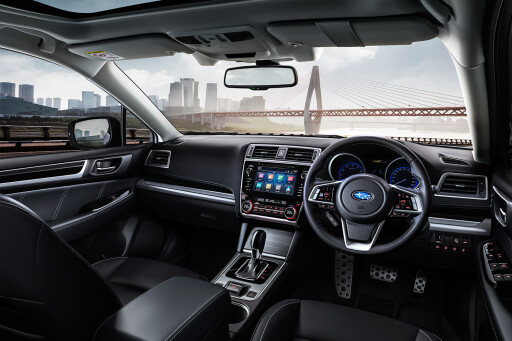
You also get a better infotainment system with a larger, 8.0-inch, touchscreen (up from 7.0-inches), Apple Carplay/Android Auto smartphone pairing, and satellite navigation. There is a power-operated sunroof, and the headlights use bright, long-lived LEDs (rather than halogen bulbs).
The Premium brings you additional active safety systems too, including high-beam assist, blind-spot monitoring, lane-change assist and rear cross-traffic alert. (For more on these, please open the Safety section below.)
It also has a side-view parking monitor and steering responsive headlights that automatically dim when another vehicle appears.
Spending more again for the 3.6R Premium gets you the much more powerful, 3.6-litre, six-cylinder engine, the features of the 2.5i Premium, and 12 Harman Kardon brand speakers for the audio system. You also get exterior cosmetic changes, such as extra chrome-look trim on the boot and door handles and dual exhaust tailpipes.
Does any upgrade have a down side?
No, except for the additional thirst of the 3.6R over either Liberty 2.5. That’s more marked in the city because unlike the 3.6-litre engine, the 2.5 has an automatic stop-start system that saves fuel in urban driving.
How comfortable is the Liberty?
Seat cushion comfort and backrest support in the Liberty is terrific, and both the cloth and the leather seat trims are well finished and feel like they will wear well.
The ergonomic relationship of the driver’s seat, wheel, pedals and minor controls is excellent.
The ride in the Liberty is comfortable on well-finished roads, and the car also handles big bumps well. But it feels unusually reactive to the small surface imperfections common on coarse-chip country roads and urban arterial, where its reluctance to settle becomes tiring.
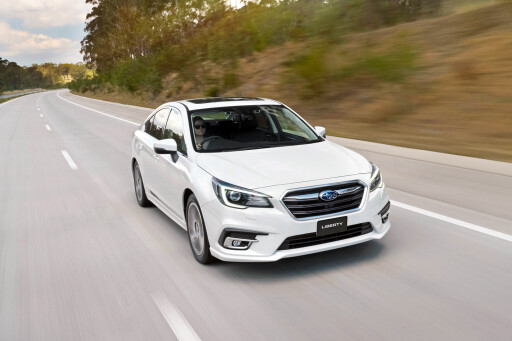
The Liberty does, however, isolate occupants well from suspension noise and most tyre and wind noise.
A 2.5-litre Liberty is responsive in the initial few centimetres of accelerator travel and has enough oomph for normal city driving. While it is up to the job on highways too, the four-cylinder feels like it is working hard when climbing long hills or overtaking. If you have experience driving a similar sized car with a turbo-petrol or turbo-diesel engine, a Liberty 2.5 will feel short on power in these circumstances.
What about safety in a Subaru Liberty?
The Subaru Liberty stands out for its high level of active safety on all versions via the EyeSight suite, as well as the standard reversing camera, seven airbags and electronic stability control.
There are airbags directly in front of the driver and front passenger; an airbag outside each front occupant to protect the upper body; a curtain airbag extending down each side of the car to protect the heads of front and rear occupants; and a knee protection airbag for the driver.
EyeSight brings you an autonomous emergency braking system. A computer monitors images from two cameras mounted above the windscreen. If it detects an obstacle – typically another car that has slowed suddenly – it will warn you, and if you do not respond quickly it will brake the car for you. The system works at all speeds below 145km/h, although (as with any such system) how much it can slow you will depend on your speed and the conditions.
EyeSight also warns you if you are drifting out of your lane (a sign of fatigue). A lead-vehicle start alert tells you that the vehicle ahead of you in a queue has moved on.
Adaptive cruise control maintains a safe distance automatically from other vehicles ahead on the highway. Linked with EyeSight, it recognises brakes lights and vehicles from longer distances and wider angles, making it even safer on multilane roads or when vehicles cut across lanes.
The 2.5i Premium and 3.6R Premium add to this high-beam assist (which dips the headlights automatically for oncoming vehicles), a blind-spot monitor (which warns you, when you indicate to change lanes, if a vehicle is alongside out of view), and lane change assist (which warns when a fast-moving vehicle in a neighbouring lane is about to enter a blind spot). They also provide a rear cross-traffic alert, which warns, when you’re reversing, if a jogger, cyclist or other vehicle is crossing behind you.
The Australasian New Car Assessment Program (ANCAP) awarded the Subaru Liberty five stars for safety, the maximum rating, in December 2014.
I like driving - will I enjoy this car?
The Subaru Liberty is a mixed bag of enjoyable and not-so-pleasing qualities for drivers who like to engage with their cars.
On loose surfaces or wet roads, you will appreciate its all-wheel drive. You almost never experience the wheels slipping in a Liberty, as you might briefly in a front-wheel-drive alternative such as a Mazda6, Toyota Camry, or the discontinued Kia Optima (before the electronic stability control throws out its safety net).
In addition to giving the Liberty a sure grip on the road, the AWD system, by tying together the drive from all four wheels, brings handling balance and poise. The front and rear tyres resist slipping or getting out of step with the pair at the other end because they’re linked.
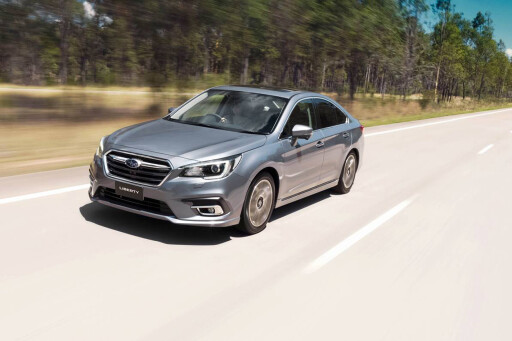
The flat layout of the boxer engines puts the mass low in the car, which helps the Liberty turn into corners keenly and adds to the feeling of good handling. The benefit of the boxer engine is more obvious in the 2.5i versions because the four-cylinder engine is shorter than the six (which means its centre of mass is further back in the car), and also lighter.
However, notwithstanding the basically good balance and turn-in, gluggy feeling steering is a big let-down. The Liberty isn’t heavy to steer, and it points accurately – it’s perfectly easy and safe to drive. But it isn’t much fun.
The 2.5-litre four-cylinder Liberties are a bit slow compared with many alternative medium size cars, most of which have smaller petrol four-cylinders with turbochargers. This lazy feel conspires with the verve-free steering, and the CVT transmission’s relatively tardy response to manual shift requests, to temper a driver’s enthusiasm.
The 3.6R completely addresses the shortage of oomph in the 2.5s. It’s a sweet-sounding, very smooth and powerful engine that lets you have a lot more fun – within the constraints of the steering and CVT.
How is life in the rear seats?
In the back of the Subaru Liberty there is good head and toe room, and generous legroom.
Rear passengers get their own air-conditioning vents, as well as a centre armrest with twin cup holders, a padded outer armrest, and a bottle holder in each door.
There are attachments for Isofix child seats in the outer rear positions.
How is it for carrying stuff?
The Subaru Liberty’s 493-litre boot is about the same size as those in most alternative medium cars – even though, unlike some of those, the Liberty has a full-size spare wheel (which it houses beneath a false floor in the boot).
The absence of internal boot hinges means you won’t inadvertently crush your luggage while shutting the Liberty’s boot-lid.
A 40-60 split-fold seat brings the ability to carry larger or longer items when the back seat is not needed. The 40 per cent seatback is behind the front passenger’s seat, which makes it possible to carry very long items along the full length of the interior while seating two rear passengers, at a squeeze, on the driver’s side.
Where does Subaru make the Liberty?
The Subaru Liberty is made in Japan.
What might I miss that similar cars have?
Better fuel economy – and often greater power also – from either a small turbocharged petrol engine or a turbo-diesel. The Mazda 6, Volkswagen Passat and the Skoda Octavia offer fuel-efficient turbo petrols, for example, and Toyota Camry hybrids.
Perhaps a wagon version. You have to buy the Outback (a cross between a conventional wagon and an SUV) if you want a tailgate in a medium Subaru. The Outback is based on the Liberty, but with slightly raised suspension and a light off-roading slant. The Subaru Levorg is another option if you want something sportier.
I like this car, but I can't choose which version. Can you help?
Our reviewers like the 3.6R because it transforms the Liberty from a bit slow to quite quick, even though it does make it thirstier.
Are there plans to update the Liberty soon?
The current sixth-generation Subaru Liberty went on sale in December 2014.
The 2.0i Premium and 3.6R Premium received updates, including additions to the Eyesight safety system, early in 2016.
A cosmetic and equipment update for the Liberty arrived in February 2018.
Apple CarPlay and Android Auto connectivity were added in 2019.
A new-generation Liberty is coming in 2021, however, it won't be coming to Australia which means this 2020 model is the last to go on sale here.
Score breakdown
Things we like
- Value
- All-wheel-drive traction
Not so much
- Dull steering
- Busy ride
News
-
 News
NewsSubaru recalls nearly 80,000 vehicles in Australia
The brand has issued a recall for 78,617 examples of the Impreza, XV, Liberty, Outback, WRX and Levorg due to a manufacturing issue
-
 News
NewsSubaru passes 20 million all-wheel-drive vehicles produced
Japan's first mass producers of all-paw drivetrains has rolled its 20 millionth car off the production line
-
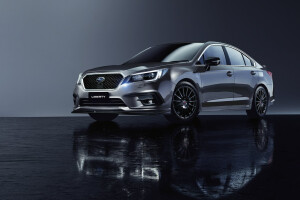 News
NewsSubaru signs off Liberty nameplate with Final Edition
Subaru sends off Liberty sedan with the handsome, limited-run Final Edition
-
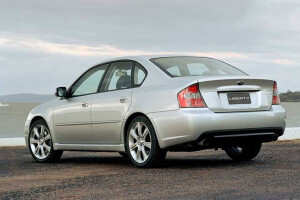 Features
FeaturesGive us Liberty: Looking back at the Subaru Liberty’s time in Australia
Australia’s not getting the new Subaru Liberty, so it’s nostalgia time
-
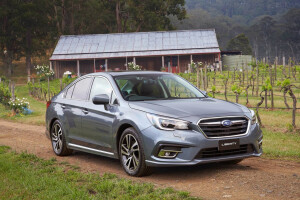
New Subaru Liberty won't make it to Australia
-
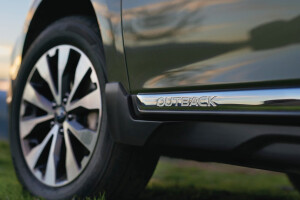
All-new Subaru Outback slated for 2020
-
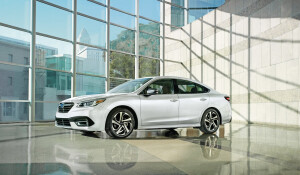
2020 Subaru Liberty turbo unlikely to reach Australia
-
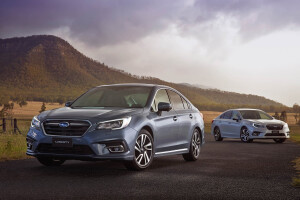
2018 Subaru Liberty pricing and features






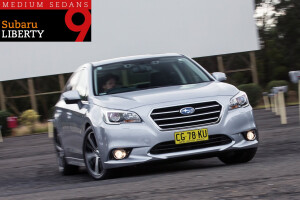

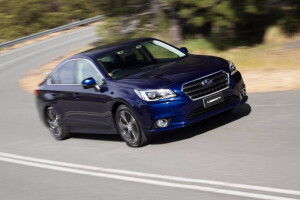
.jpg)